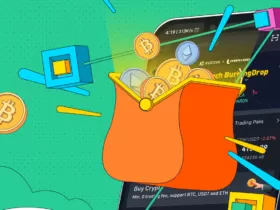The journey of education, filled with complex school assignments, intensive studying, and numerous college applications, is a universal experience shared by students worldwide. Yet, not everyone embarks on this journey on equal footing. Access to quality education has traditionally been impeded by numerous challenges, such as geographic barriers, economic disparities, and cultural differences. However, a transformative shift is currently underway, fueled by the burgeoning influence of technology.
Over the past few years, tech innovations have begun to significantly dismantle the barriers to education, making learning more accessible globally. From remote learning platforms to assistive technology for students with disabilities, the face of education is changing rapidly. Meanwhile, if you are a student struggling with the burden of endless assignments, you can always ask domyessay.com to write your essay for the best price.

Breaking Down Geographical Barriers
Learning is no longer confined to the four walls of a classroom. Thanks to technology, students in remote areas, unable to access a physical school, now have the opportunity to pursue quality education online. Virtual learning platforms offer interactive classes, video lectures, and digitally-transformed textbooks that students can access with just a click of a button.
Moreover, Massive Open Online Courses (MOOCs) are enabling students to take classes from prestigious universities worldwide, often free of charge. This trend is dismantling the geographical barriers to education, providing students the opportunity to learn from the best minds across the globe.
Economic Learning Solutions
One of the most significant barriers to education is the financial constraint. Traditional education, especially higher education, can be exorbitantly priced, thus excluding a substantial segment of potential learners. Thankfully, technology is stepping in to level the playing field.
Online learning platforms are offering high-quality courses at a fraction of the cost of conventional classes. Additionally, several online resources offer free educational content, including e-books, academic journals, and instructional videos. The advent of open-source learning materials is making education significantly more affordable, thereby enabling more students to achieve their learning goals.
Assistive Technology for Inclusive Learning
Assistive technology is playing a critical role in making education more inclusive. For students with disabilities, navigating the traditional education system can be a significant challenge. However, with devices like screen readers for visually impaired students or speech recognition software for students with mobility issues, learning is becoming more accessible.
Furthermore, customized learning software can cater to students with learning disabilities, offering interactive and engaging learning experiences tailored to their specific needs. By focusing on inclusive education, technology ensures that no student is left behind due to physical or cognitive limitations.
Bridging Cultural Gaps
Language barriers have long posed a challenge to education, particularly for students studying in a non-native language. However, technology is easing this difficulty through online language translation tools. These applications can translate texts, both written and spoken, across a wide range of languages, thereby aiding comprehension and communication.
Tools like Google Translate, language learning apps such as Duolingo, and real-time transcription services are helping students overcome language barriers. Students can now access academic resources in various languages, and teachers can communicate effectively with students from diverse linguistic backgrounds. Thus, technology is fostering a multicultural and inclusive learning environment that promotes understanding and collaboration among global learners.
Technology Facilitating Parent-Teacher Interaction
Active involvement of parents in their children’s education can significantly enhance learning outcomes. However, busy schedules, geographical distances, or cultural differences may prevent effective parent-teacher interaction. This is another area where technology is making a big difference.
Many schools are now using digital platforms to keep parents updated about their children’s academic progress. These platforms offer features like virtual parent-teacher meetings, real-time progress tracking, and instant notifications about homework and assignments. By facilitating consistent and transparent communication between parents and teachers, technology is playing a crucial role in creating a supportive learning environment for students worldwide.
Breathing New Life into Classrooms with Technology
We are witnessing a radical transformation of what we used to know as the traditional classroom. Interactive whiteboards have replaced dusty chalkboards. Digital textbooks are steadily making hefty backpacks lighter, and learning management systems are streamlining the whole teaching and learning process. The tech revolution within classrooms has created an engaging environment that spurs students to interact, collaborate, and think critically.
Think about how fun it is to participate in quizzes made on platforms like Kahoot and Quizlet! They add an element of excitement to learning. And then, we have platforms like Google Classroom and Canvas, which have made the task of distributing, collecting, and grading assignments as easy as a few clicks. They have made it easier to conduct online discussions, provide feedback, and evaluate performance. By weaving technology into classrooms, we are adding a new depth to the learning experience, making it more interactive, and helping students grasp concepts better.
Embracing the Future of Learning with AI and Machine Learning

Artificial Intelligence (AI) and Machine Learning (ML) have taken the world by storm, and the field of education is no exception. They are making learning a personalized experience by tailoring the process to suit individual students’ needs. AI-powered platforms can gauge a student’s understanding, learning pace, and favorite way to learn and then provide them with tailor-made learning materials and tests.
Imagine a tutor who is always there for you. That’s what AI-powered tutoring systems like Carnegie Learning’s MATHia and Third Space Learning are doing. They provide personalized one-on-one tutoring, helping students fill in their learning gaps. Even better, Machine Learning algorithms can anticipate student performance, helping teachers step in and provide support just when it’s needed. AI and ML are not only making learning easier, but they’re also reshaping how we view and approach education.
Conclusion
The role of technology in making education universally accessible is undeniable and transformative. It is helping to demolish geographical, economic, and physical barriers, bringing the dream of universal education closer to reality. As technology continues to reshape education, remember that quality academic support is also vital for students’ success. The best essay editing services can provide that critical support, ensuring students don’t just learn but truly thrive in their academic journeys.


























